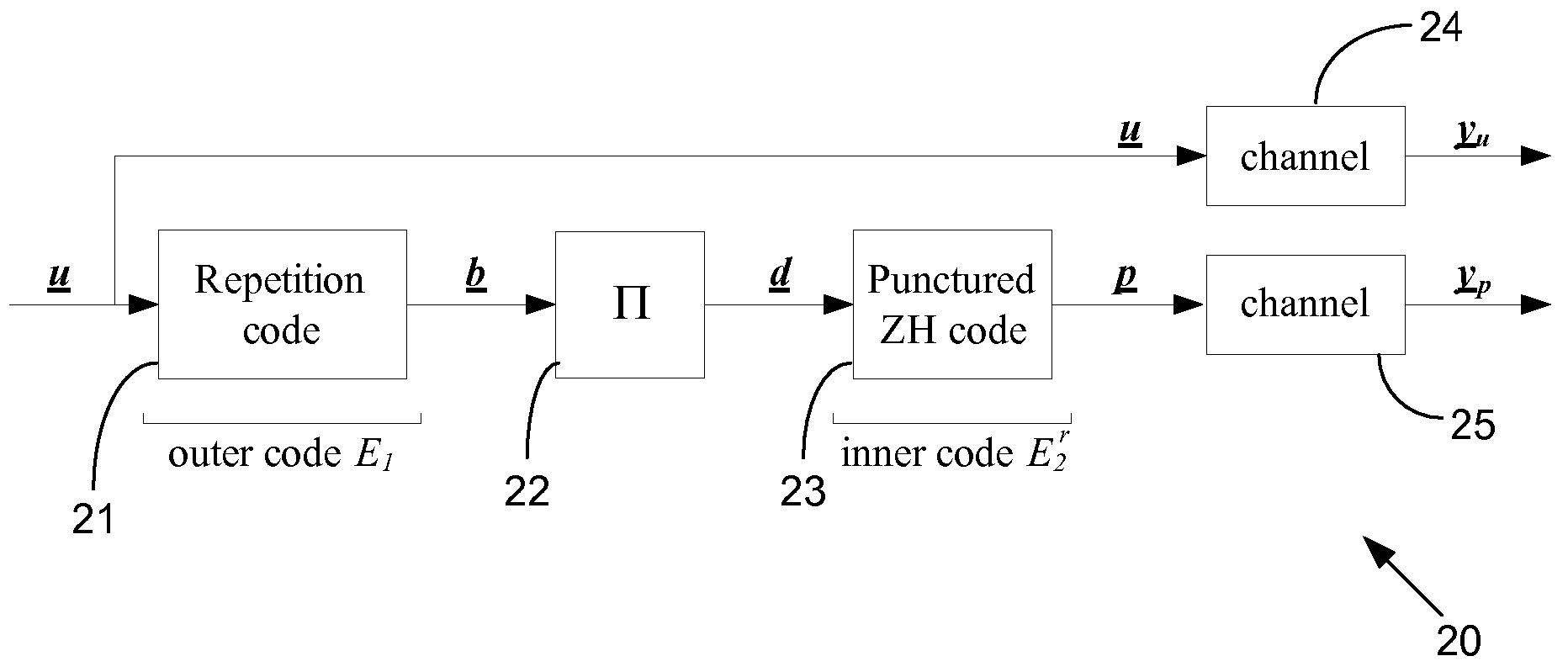Low-complexity high-performance low-rate communications codes
a low-rate, high-performance technology, applied in the field of low-complexity high-rate communication codes, can solve the problems of large performance loss from simulation, high cost, and high cost, and achieve the effect of reducing the convergence speed of iterative decoding, and reducing the complexity of the cod
- Summary
- Abstract
- Description
- Claims
- Application Information
AI Technical Summary
Problems solved by technology
Method used
Image
Examples
example 4
[0097] We first consider the performance of the regular code. Consider a regular systematic RZH code with r=4 and dv=7 which corresponds to a rate of 0.0494 . FIG. 13 depicts the simulated BER performance of this code. The simulated SNR threshold (measured at Pb=10−4) is around −0.66 dB which is 0.78 dB away from the Shannon capacity −1.44 dB. To obtain better performance, we resort to irregular codes. We consider an irregular code with dv=7 and f(x)=0.4353x3+0.0072x4+0.0016x5+0.0099x8+0.1759x9+0.1829x10+0.0800x11+0.1071x12. The simulated SNR threshold for this code is −1.15 dB, which is only 0.29 dB away from the capacity and has a gain of 0.49 dB over the regular one. Next we provide another example.
[0098]Example 5: By setting r=4 and dv=8, the systematic RZH code has a rate of 0.0435. The Shannon limit for this code is −1.46 dB. Again, consider an IRZH code with f(x)=0.4044x3+0.0026x4+0.0048x5+0.0245x6+0.0453x8+0.0669x9+0.0296x10+0.0203x11+0.0985x12+0.3030x13. The BER performance...
PUM
 Login to View More
Login to View More Abstract
Description
Claims
Application Information
 Login to View More
Login to View More - R&D
- Intellectual Property
- Life Sciences
- Materials
- Tech Scout
- Unparalleled Data Quality
- Higher Quality Content
- 60% Fewer Hallucinations
Browse by: Latest US Patents, China's latest patents, Technical Efficacy Thesaurus, Application Domain, Technology Topic, Popular Technical Reports.
© 2025 PatSnap. All rights reserved.Legal|Privacy policy|Modern Slavery Act Transparency Statement|Sitemap|About US| Contact US: help@patsnap.com



